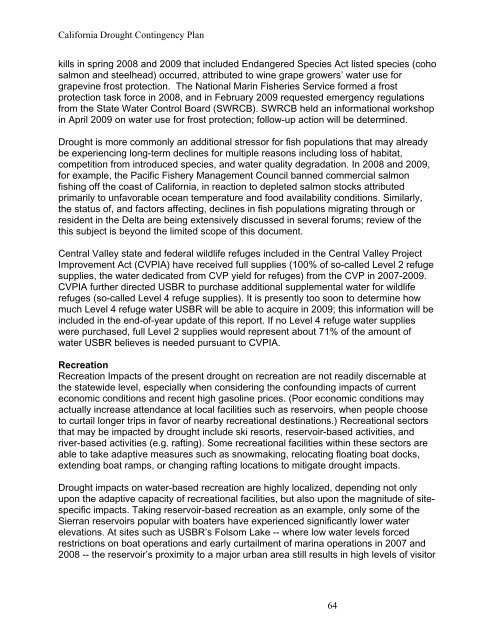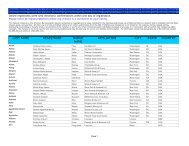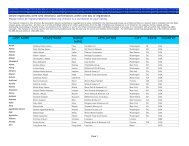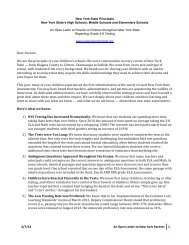Final_CA_Drought_Contingency_Plan-11-18-2010a
Final_CA_Drought_Contingency_Plan-11-18-2010a
Final_CA_Drought_Contingency_Plan-11-18-2010a
Create successful ePaper yourself
Turn your PDF publications into a flip-book with our unique Google optimized e-Paper software.
California <strong>Drought</strong> <strong>Contingency</strong> <strong>Plan</strong>kills in spring 2008 and 2009 that included Endangered Species Act listed species (cohosalmon and steelhead) occurred, attributed to wine grape growers’ water use forgrapevine frost protection. The National Marin Fisheries Service formed a frostprotection task force in 2008, and in February 2009 requested emergency regulationsfrom the State Water Control Board (SWRCB). SWRCB held an informational workshopin April 2009 on water use for frost protection; follow-up action will be determined.<strong>Drought</strong> is more commonly an additional stressor for fish populations that may alreadybe experiencing long-term declines for multiple reasons including loss of habitat,competition from introduced species, and water quality degradation. In 2008 and 2009,for example, the Pacific Fishery Management Council banned commercial salmonfishing off the coast of California, in reaction to depleted salmon stocks attributedprimarily to unfavorable ocean temperature and food availability conditions. Similarly,the status of, and factors affecting, declines in fish populations migrating through orresident in the Delta are being extensively discussed in several forums; review of thethis subject is beyond the limited scope of this document.Central Valley state and federal wildlife refuges included in the Central Valley ProjectImprovement Act (CVPIA) have received full supplies (100% of so-called Level 2 refugesupplies, the water dedicated from CVP yield for refuges) from the CVP in 2007-2009.CVPIA further directed USBR to purchase additional supplemental water for wildliferefuges (so-called Level 4 refuge supplies). It is presently too soon to determine howmuch Level 4 refuge water USBR will be able to acquire in 2009; this information will beincluded in the end-of-year update of this report. If no Level 4 refuge water supplieswere purchased, full Level 2 supplies would represent about 71% of the amount ofwater USBR believes is needed pursuant to CVPIA.RecreationRecreation Impacts of the present drought on recreation are not readily discernable atthe statewide level, especially when considering the confounding impacts of currenteconomic conditions and recent high gasoline prices. (Poor economic conditions mayactually increase attendance at local facilities such as reservoirs, when people chooseto curtail longer trips in favor of nearby recreational destinations.) Recreational sectorsthat may be impacted by drought include ski resorts, reservoir-based activities, andriver-based activities (e.g. rafting). Some recreational facilities within these sectors areable to take adaptive measures such as snowmaking, relocating floating boat docks,extending boat ramps, or changing rafting locations to mitigate drought impacts.<strong>Drought</strong> impacts on water-based recreation are highly localized, depending not onlyupon the adaptive capacity of recreational facilities, but also upon the magnitude of sitespecificimpacts. Taking reservoir-based recreation as an example, only some of theSierran reservoirs popular with boaters have experienced significantly lower waterelevations. At sites such as USBR’s Folsom Lake -- where low water levels forcedrestrictions on boat operations and early curtailment of marina operations in 2007 and2008 -- the reservoir’s proximity to a major urban area still results in high levels of visitor64






